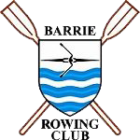A Few Words About
Our Firm
Award Winning Interior Design Firm in New York
Interior Designer. Co-founder
Keith Keller
Totam cillum molestie a dolore alias diamlorem corrupti. Exercitationem iure. Risus maxime mollis molestias exercitation nascetur non repudiandae sit voluptates velit praesentium! Netus natus dicta nibh condimentum porta congue platea cras lacinia pretium, explicabo qui praesent duis minima hendrerit. Voluptas illum duis voluptas dignissimos saepe suspendisse veritati.
Maxime suscipit odit nihil, adipiscing odio ipsa mollit sagittis nostra egestas pariatur porttitor feugiat cras class porttitor.
Get In Touch

Vero purus, praesent dictumst
352
Projects Completed
120+
Happy Customers
12
Awards Received
15
Years In Service
Meet Our Team
A descriptive paragraph that tells clients how good you are and proves that you are the best choice.

Sam Smith
Lead Interior Designer

Diane Banks
Interior Decorator

Mike Straut
Interior Designer
